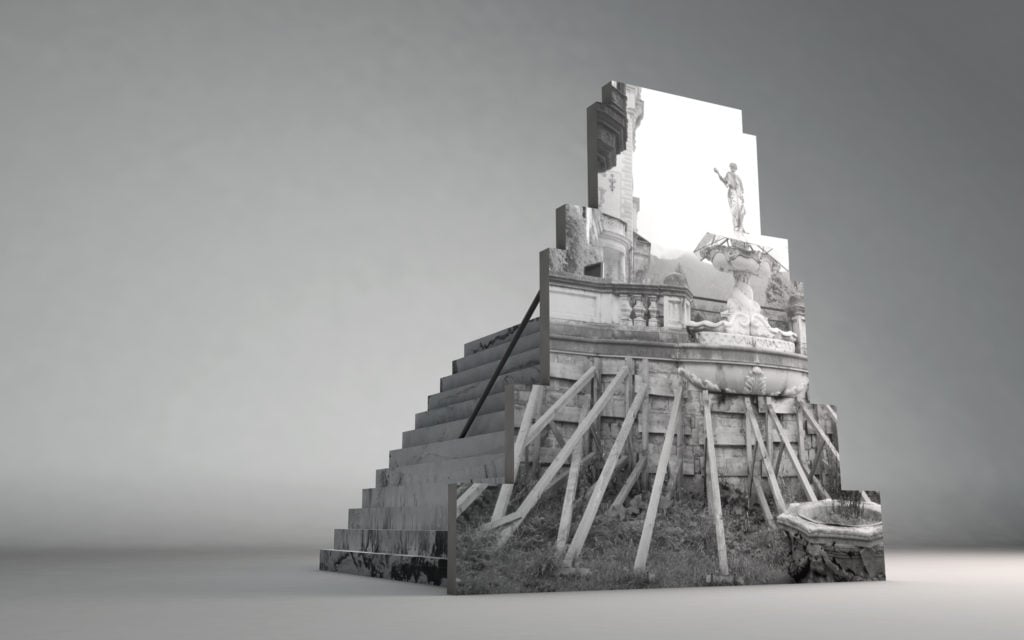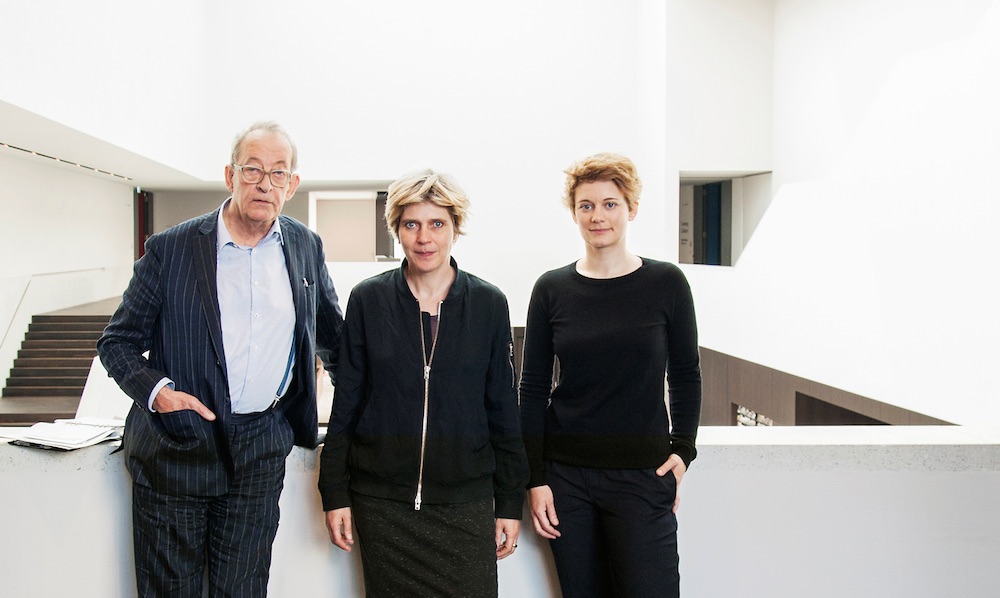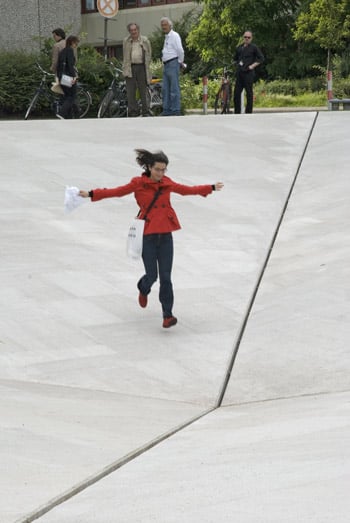Art World
A Brief Guide to Skulptur Projekte Münster, the Most Important Art Show That Millennials Have Never Heard About
The decennial event is built on accessibility and outreach.

The decennial event is built on accessibility and outreach.

On June 10, one of the most important shows in the world, the Skulptur Projekte Münster (SPM), will launch its fifth edition in its namesake German city, the cultural heart of North Rhine-Westphalia. Running for 100 days through October 1, SPM will feature over 30 new productions of public art, ranging from sculpture to performance, spread across the city and its neighboring town of Marl. But what’s so special about SPM? And how come most young people in the art world know so little about it?
The answer might lie in its slow pace. One of the main features of the exhibition is that it takes place once every ten years, since 1977. (Since its second iteration in 1987, it also coincides with every other edition of Documenta, which was delayed that year.) Another important constant in the decennial is that its artistic director since the very first edition has always been Kasper König, who works on each iteration with rotating curatorial teams. This year, the co-curators are Britta Peters and Marianne Wagner.
If 2017 marks your first visit to SPM, here’s everything you need to know about the show, its history, and what to see this year. And a piece of friendly advice to the uninitiated: rent a bike.
But first, let us start with the correct pronunciation of the show’s German name:
Skool-ptoohr (the stress is on the T) proh-yaeh-kté Muen-stear. Got it?
How it all started, how it works
The exhibition was initiated by König and Klaus Bussmann in reply to a public outcry that broke out in 1970 around a contemporary public artwork that had been installed in the historically reconstructed city. The first-ever edition was thus mounted in 1977 with the goal of educating and sensitizing the public to contemporary art; it featured a male-only roster that reflected the experimental tendencies of the time, including artists such as Carl Andre, Michael Asher, Joseph Beuys, Donald Judd, Richard Long, Bruce Nauman, Claes Oldenburg, Ulrich Rückriem, and Richard Serra.
What had first originated from a provocation has meanwhile made Münster into one of the best-known venues for contemporary sculpture in the world, and throughout the years, the city has acquired more than 35 of the artworks that have been featured in the show, which remain on permanent display.
In fact, SPM has raised the city’s appeal (and income) so much, that the local authorities wanted to host it every five years—a suggestion that König strongly rejected. “It was not originally intended to be a long-term project,” he told artnet News in an email. “After 2007 I said, if you do it every five years, I will take you to the highest court. You’re not allowed to do it. I’m not sure I had a legal basis, but they backed down, and then I said, OK, I’ll do it myself and build the team for it.”

The curators of SPM 2017 Kasper König, Britta Peters (center), and Marianne Wagner.
“A slowed-down, 10-year interval is the best way to examine changes which took place in sculptural approaches, also related to society,” he argues.
Thanks to the generous time afforded by the intervals, the works created for the event tend to be long-term projects that artists conceive with the utmost deliberation, with a specific site in mind. “As a kind of long-term study, each edition mirrors a multifaceted process of negotiation with the city of Münster as well as with important artistic and societal issues of its time,” König opined.
“Since 1977, SPM have sent out invitations of an initially non-committal nature to a number of artists, whose continual visits for several days at a time form the point of departure for the exhibition’s development,” he explained. “Their project proposals are discussed, and the profile of the respective edition of the Skulptur Projekte only crystallizes as the works come to realization.”
Key moments, participants, and other scandals
From its second iteration onward, SPM’s artist list has grown more diverse. Notably, one woman artist in particular has three editions under her belt: Isa Genzken (1987, 1997, 2007), an honor she shares with several male cohorts such as Carl Andre and Ulrich Rückriem, while Michael Asher and Thomas Schütte top the list, having participated in four out of five editions, this year’s included.
Inevitably, some artworks throughout the show’s history have been controversial, and some have been vandalized. In 1987, German artist Katharina Fritsch installed a life-size yellow plaster replica of the Lourdes Madonna on the street—a provocation for the catholic city of Münster. The sculpture’s praying hands were smashed; later, people gifted it flowers.
Another memorable piece included Mike Kelley’s Petting Zoo (2007), which consisted of, well, a petting zoo with sheep, goats and ponies, at the center of which stood a pillar of salt representing the biblical story of Lot’s wife, at which the livestock licked away.
A proposal by Bruce Nauman, Square Depression, that was initially rejected in the first-ever 1977 edition was then reintroduced for the 2007 iteration, and produced at the cost that Nauman gave it some 30 years earlier. The piece, which consists of an inverted concrete pyramid dug into the ground in front of the university’s physics department, has become one of the permanent works that can be found around the city.

Bruce Nauman, Square Depression (Quadratische Senkung) 1997/2007. Courtesy Skulptur Projekte Münster
Several installations that require careful maintenance, such as Dan Graham’s pavilion Octagon for Münster (1997), will be re-erected or made more easily accessible for this year’s visitors.
What to expect this year
The curators will respond to the impacts of digitalization and globalization on society, and this year’s show differs from previous ones in that it will include more performance pieces.
“Obviously now our interest is in doing something new,” König told artnet News. “My job is to tell the artists to forget about what’s already there, but they are interested in it all the same. All the artists have either come here as students or at least already know about it, so we don’t have to introduce ourselves,” he added.
Another novelty is the fact that some pieces will be on view in the neighboring town of Marl, a locality that, in direct opposition to Münster, was built in the Modernist, post-war-era style of Internationalism. “The identities chosen by the two cities after World War II—reconstruction and continuity in Münster, radical new beginning in Marl—could hardly be more different,” the curators explain.
The Berlin-based group Peles Empire, whose practice involves translating the furnishings of the Romanian Peles Castle into installations, will react to this with a sculpture installed in the city center inspired by Münster’s postwar reconstruction of building façades.
In addition to the works in public space, some pieces will be installed at the Theater im Pumpenhaus. There, visitors will also be able, thankfully, to charge their mobile devices in an artwork by Aram Bartholl that will consist of a campfire and the curious-sounding “campfire-bread method.” Gregor Schneider will transform an area into a private flat accessible only by way of an emergency exit, and Nora Schultz will dim the light in the foyer and, with the aid of clumsy drone images, alter viewers’ perception of the space. Other central locations include the Trafostation cultural center, and the LWL-Museum. (The museum will also play host to the opening ceremony, on June 10 at 5 p.m., followed by a party at the Hawerkamp club.)
Accessibility and education being some of the pillars that SPM is built on, access to the show, its opening ceremony, and other events is open to everyone free of charge, and geared towards a large spectrum of visitors. Guided tours will be available in several languages, including—besides German, English, French, and Dutch—”German plain language” for learners, and languages representative of the region’s social fabric such as Arabic, Dari/Farsi, Kurdish, and Russian—a refreshing approach to the topics of migration, displacement, and refugees in Europe.
Skulptur Projekte Münster runs from June 10 – October 1, 2017